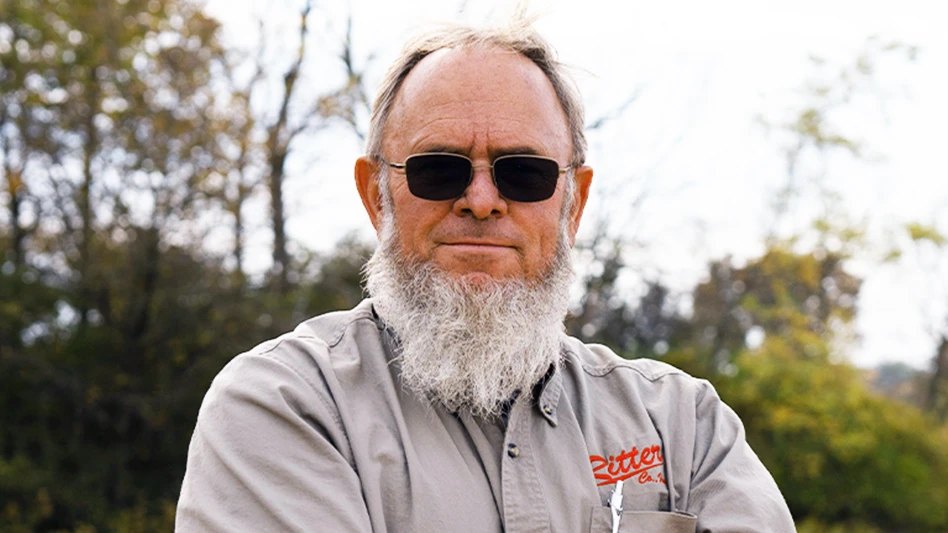
Photo courtesy of Southwest Waste

Photo courtesy of Southwest Waste
In the construction and demolition (C&D) recycling environment, sorting equipment has tended to stay as consistent as the material stream, a steady procession of concrete, wood and metal. However, as manufacturing companies such as Quebec-based Sherbrooke OEM have become more knowledgeable about C&D facilities, they’ve begun incorporating new-to-the-space technology such as eddy current separators commonly used in metals and single-stream recycling.
“There’s innovation coming,” said Charles Lomangino, CEO of Fort Myers, Florida-based Southwest Waste Services during an executive panel at C&D World 2024. “In Naples, [Florida], we’re noticing there’s a whole lot of nonferrous in the waste stream. People like Sherbrooke are building systems with a working knowledge of facilities. C&D is coming to the forefront of business leaders’ minds.”
Eddy current separation is a sorting technique for nonferrous metals consisting of a short stretch of belt and a rapidly rotating permanent magnet system. The driving force is a magnetic-repelling phenomenon discovered in 1851 by French physicist Leon Foucault. When the moving magnetic field intersects with a conductor, it generates a repulsive force on the metal, thus throwing the aluminum, for instance, to separate it from the material flow.
Construction & Demolition Recycling magazine spoke with Sean Brewer, general manager of facility operations for Southwest Waste, about the decision to install an eddy current separator supplied by Steinert U.S., headquartered in Walton, Kentucky, in the system at the company’s C&D recycling and transfer station facility in Naples.
Construction & Demolition Recycling (C&DR): What inspired Southwest to install an eddy current separator?
Sean Brewer (SB): For us, we’re all about diversion rates. [We’re always looking for] anything we could potentially recover more of or recover in general. We get all the stone off, we get the wood off, but we saw the aluminum cans going through. The problem ... is you can’t pick them fast enough. You’re trying to go for weight because that’s where your diversion shows the most. We wanted to get the aluminum off there, and that’s what drove us in that direction.
C&DR: What are some examples of the nonferrous metals you’re seeing come through?
SB: We’re seeing aluminum cans coming from construction workers’ … consumption on the sites. There’s other stuff, too, fragments of window framing and things like that. We get some extruded aluminum, some sheet aluminum and some other miscellaneous stuff.
C&DR: Did Steinert make any modifications to the separator for the C&D setting?
SB: I have a pretty heavy background in eddy currents. Before my C&D life, I was in the metal industry and I built and designed metal recovery plants around the country.
[Steinert] didn’t make any modifications to the unit—but we did when it arrived. You change the drum speed to get either high- or low-density material, and there are some tricks to the trade when it comes to that.
If you want to get a bottle cap, you’ve got to speed the drum up. If you want to get a can, you slow it down. You’ve got to find that happy medium to get it all.
C&DR: How does the eddy current separator work in combination with the rest of the line?
SB: Typically, the way the C&D line … works is you have your overs and your unders at two different spots on the system. This is the secondary cut. You have your A line, which is where you see sorters, the workers, and then the B line is primarily mechanically separated. That smaller-size fragment is the side we put the eddy on.
C&DR: What are the benefits of using an eddy current separator in a C&D environment?
SB: We’ve definitely seen an improvement [in] diversion. We still have some work to do with it. [It’s] been running for about four months now. It’s very new.
C&DR: What are the challenges you’ve faced so far?
SB: The biggest challenge is getting everyone acclimated wit h the different style of maintenance that an eddy takes over the rest of the sorting line. [It requires] a different type of cleaning. It takes a different kind of grease. If you put the wrong grease in the bearings on an eddy current, you’re going to lose the drum, and that’s big money.
C&DR: Does Southwest have plans to integrate eddy current separators into additional facilities?
SB: We’re definitely not ruling it out. We haven’t confirmed one way or the other, but I think it’s a good thing. It’s a big investment. And that’s kind of where we’re at with it.

Explore the May/June 2024 Issue
Check out more from this issue and find your next story to read.
Latest from Construction & Demolition Recycling
- Cielo settles with contesting shareholder
- Evoquip adds trommel screen to product line
- Bomag to showcase innovations on the National Mall
- NWRA, SWANA to partner on safety, education and advocacy
- Caterpillar announces collision warning system, other technology for medium wheel loaders
- ABC: Nonresidential construction adds jobs in April despite headwinds
- Demolition underway at former SC steel mill
- Turkey neglects US scrap in favor of Russian shipments





